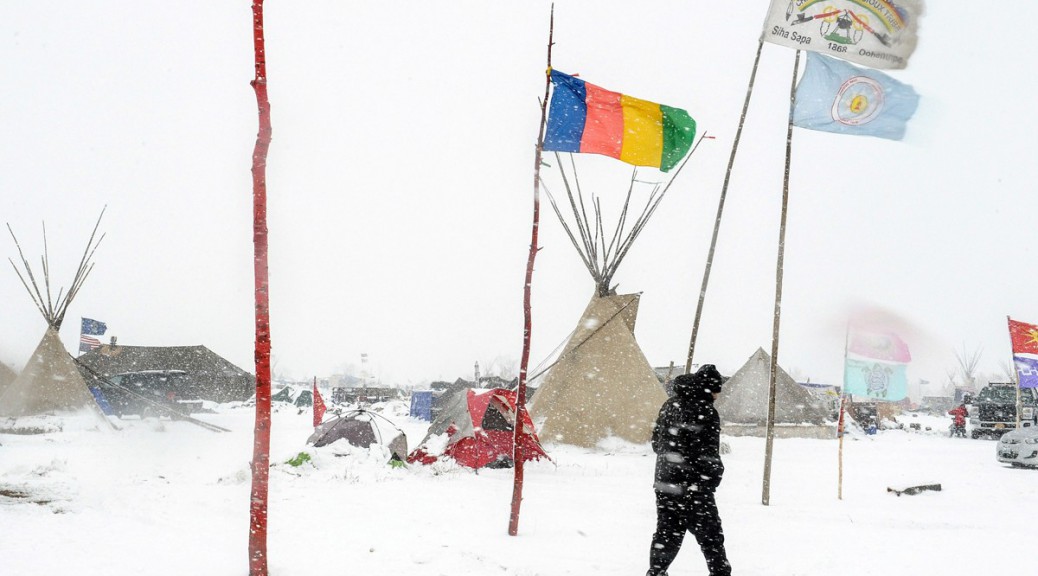What can you say about Standing Rock? How to begin to describe what has been happening there in the past months to someone who hasn’t been? It’s a question that has been needling me ever since I left. A real answer would take up much more space than I have here and would be written by someone with more knowledge than me, as I only spent a few weeks there. The short answer is that it’s complicated. One thing I learned quickly while there was to be wary of those claiming to have the only correct or official program for resisting the pipeline and standing in solidarity with indigenous warriors. Like any group, Native people are not homogenous. Some are prepared to defend their land and people using whatever tactics are necessary, some are understandably cautious given this country’s legacy of violence against them, and some are classic politicians who despite good intentions act to neutralize any momentum generated by the people they claim to represent in return for a seat at the negotiating table. This last group, in Standing Rock as much as anywhere else in the world, is elevated to prominence by colonial power structures such as non-profits, tribal governments and media, and in a bizarre but unsurprising reversal any non-Native who seeks out as wide a variety of Native views as possible and evaluates how best to contribute to the struggle accordingly rather than simply parroting the official leadership is accused of perpetuating colonialism. Native spiritual practices are then mobilized to pressure warriors to remain ‘peaceful and prayerful,’ in a manner similar to how Christianity is often deployed against non-Native struggles. This was clearly especially painful to witness for the multiple Natives, both Sioux and non-Sioux, who explicitly told me that their traditions have never recognized a division between praying and fighting back, with one elder labeling the imposition of Western notions of pacifism on Native traditions ‘spiritual abuse.’
Yet in spite of such obstacles there are many powerful currents brewing at Standing Rock. In addition to the actions taken against the pipeline, covered elsewhere in this issue, people from all across Turtle Island and the world are building bonds and generating momentum against industrial civilization that I think will prove extremely powerful in the coming years; indeed this momentum has already manifested itself in a variety of anti-infrastructural actions around the continent in the past months. Furthermore, people who have only recently found themselves within the struggle are listening to and learning from those for whom struggle has been a reality for generations. This is especially important given the tendency of the white Left in this country to gloss over the genocidal foundations of this society and thus claim victory the moment a few reforms are offered, leaving those who can’t or won’t stop pushing forward even more isolated than before. We can only hope that this renewed historical awareness will encourage us not to stop now. As anyone who spends much time at Standing Rock quickly learns, if you want to split a log of firewood you can’t just aim for the top of the log. If you do the ax will simply bounce off. Instead you must swing through the log at the larger piece of wood it is sitting upon. If we really want to kill this pipeline we can’t just swing at DAPL but must swing at the oil economy as a whole. And when DAPL is dead we will keep on swinging, not just at the oil economy but at this entire white-supremacist industrial nightmare.



